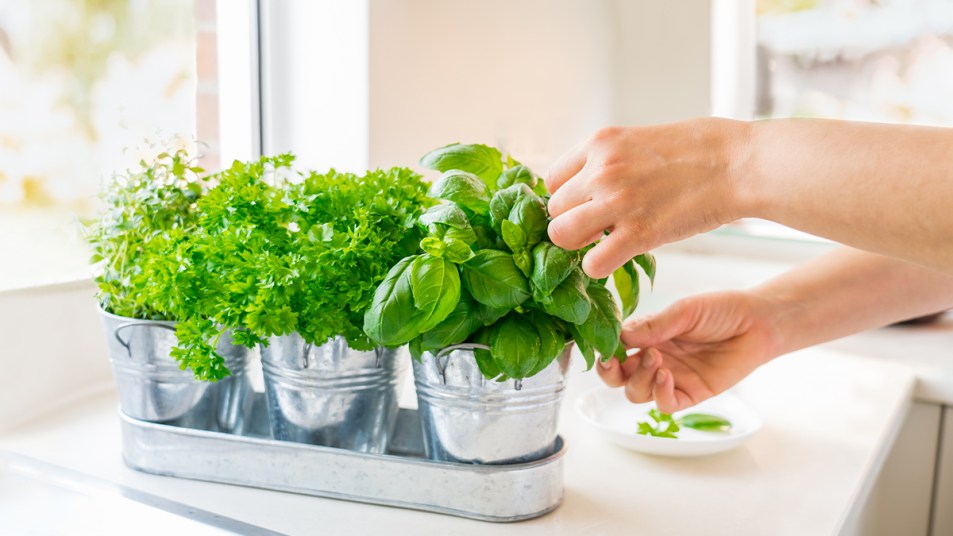How to Manage and Care For an Herb Garden All Year Round

Whether you’d like to start a herb garden for recipes in the kitchen, you love gardening or for purely decorative reasons, these aromatic plants are easy to manage and can grow indoors or outdoors. If you do not have the space for an outdoor herb garden, many herbs grow well in containers. Keep reading to learn some tips for your herb garden and other advice on how to manage your fresh edible plants.
Beginner Herb Gardening Ideas
You can plant three or four varieties in each large planter. Specific herbs grow well together such as these combinations:
- Mediterranean herbs: Sweet basil, rosemary, and thyme
- Salad herbs: Chives, arugula, and dill
- Middle Eastern herbs: Cilantro, parsley and thyme
How to Take Care of Your Herb Garden
- If you plant your herbs in pots they will need to be watered frequently, therefore test the soil each day — if it feels crumbly or dry give them water.
- Herbs require full sun for most of the day so ensure you position the pots or planter somewhere bright and warm for at least six hours a day.
- Pick your herbs regularly. The more you pick the herbs, the bushier and healthier they will grow.
How do I make an outdoor herb garden?
- Pick a location: Find an area that has about six hours of sun a day.
- Prepare the area for planting: If you are planting in the ground, then start by loosening the soil for better growth. If you are using a planter box or a container, ensure that it has good drainage or holes on the bottom.
- Add plants to soil: Start by digging each hole to twice the width of the root ball of the herb and give the bedding plants a good amount of room so that they have room to spread out and grow.
- Water regularly: This one is a given. New plants need lots of water so make sure they get around an inch of water each week throughout the growing season. If you are unsure, water them a bit every day.
Tips For Herb Planting and Care
- The more you pick the herbs, the bushier and healthier they will grow but don’t remove more than half the plant at any one time.
- You should prune herbs that stay outside in spring such as rosemary, lavender, thyme, mint, chives, sage, and bay leaves.
- Potted herbs can be grown as part of an indoor herb garden during the winter on south-facing window sills. Think of herbs such as chives, parsley, oregano, and mint.
- Some herbs are best grown from seeds, such as basil, chives, parsley, and thyme. However you can re-pot supermarket potted herbs.
- Start sowing herbs in spring under cover, and then plant up when the soil warms up.
- One square meter is enough for 10 herb plants.
What are the best growing conditions for herbs?
Herbs will grow in most soils but they require a lot of sun. Some herbs, such as parsley and mint, will tolerate light shade in summer. Herb gardens tend to be able to tolerate drought but in hot, dry spells a deep watering will make sure that the plants stay healthy.
What are the types of herbs you can grow at home?
Some common herbs to grow and cook with are basil, chives, fennel, horseradish, marjoram, mint, parsley, rosemary, sage and thyme.
What herbs grow all year round?
Perennial herbs are easy to grow and last throughout the year. Herbs such as mint, rosemary, sage, thyme, chives, and oregano.
This article originally appeared on our sister site, Yours.
















